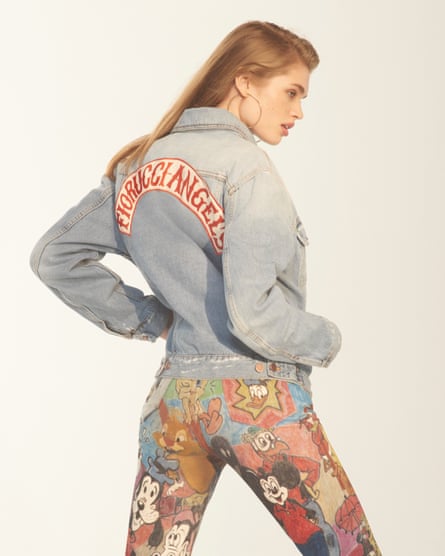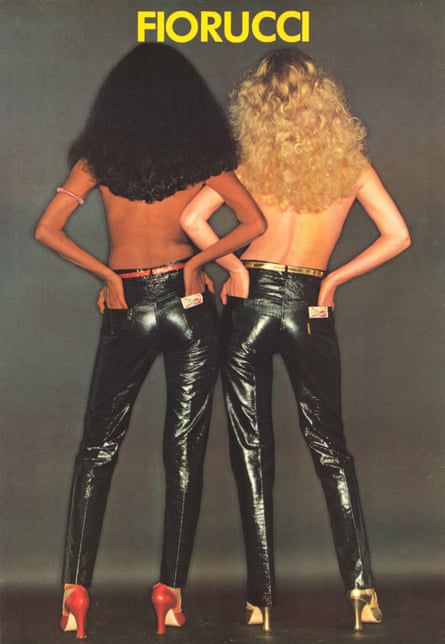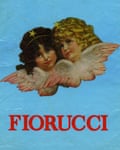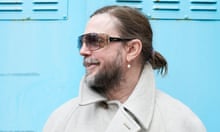In the late 70s, the Fiorucci store on New York’s Lexington Avenue was regularly referred to as the “daytime Studio 54”, partly for its clientele, which included Keith Haring, Calvin Klein and a young Marc Jacobs, as well as for the presence of Andy Warhol who, at one point, had his office in the shop. A 16-year-old Madonna played her first gig there. Photographer Maripol was the store manager. At the Milan store, meanwhile, Haring was charged with painting the walls. It’s this spirit of good times and DayGlo creative energy that Stephen and Janie Schaffer – the new owners of the brand – want to get back to with their relaunch. “What we are trying to do is create the Fiorucci of the future,” says Stephen.

As the British retail veterans who founded 80s underwear chain Knickerbox, you wouldn’t necessarily guess that the Schaffers would be behind the relaunch of this Italian brand, loved by the cool crowd in the US in the 70s and 80s. But Stephen Schaffer has long been a fan. “Elio Fiorucci was the first person to have created what are today our concept/lifestyle stores, and we know it,” he says. “As a young retailer, Fiorucci inspired everyone. People would perform, people would be seen, people would hang out …”
Indeed. Fiorucci was founded in 1967, so celebrates its 50th anniversary this year. It became known for a kind of cheeky disco-friendly sexiness – with its high-waisted jeans, shiny platforms and cherry prints on knitwear, as well as endless variations of the Fiorucci logo, some created by names including Memphis’s Alessandro Mendini and i-D’s Terry Jones. If it wasn’t cheap, it was certainly desirable: novelist Douglas Coupland has said that visiting the colourful shop – where he bought the only thing he could afford, a postcard – meant he “stopped caring about school”.

Fiorucci has remained important in the pop culture universe for half a century: from the dancefloor – it’s mentioned in a lyric in Sister’s Sledge’s He’s the Greatest Dancer (“Halston, Gucci, Fiorucci / He looks like a still, that man is dressed to kill”); to the art world – Mark Leckey made a short film about British nightlife called Fiorucci Made Me Hardcore; to your wardrobe – designers including Jacobs often reference the label, looking back to its 80s heyday.
Schaffer thinks it works for now because of the optimism. “The complete obsession with playfulness and disco and fun,” he says. “When you look at the news you think: ‘God, we need it’ … There’s a desire for escapism.” Elio collaborated with Disney on jeans, financed Basquiat film Downtown 81, sponsored parties at Studio 54 and worked with Pacha in Ibiza. He famously created stretch denim – and made jeans fashionable – after a trip to the White Isle in the late 70s. “He watched all the girls walk out the club in the morning with their jeans on and they walked into the water,” says Schaffer. “He thought: ‘Look how amazing they look when they’re wet.’ He went to Dupont and said: ‘Let’s put Lycra into denim.’” Perhaps Elio’s genius came from taking that spirit and turning it into product. People might not have gone to the all-night party, but they could wear the jeans.

Elio’s Fiorucci went into administration in 1989. The Schaffers acquired the brand – which had previously been owned by Japanese denim brand Edwin, and had a relaunch in the late 90s – at the end of 2015, weeks before Elio died.
“We inherited this incredible graphic archive and there were the keys to a warehouse in Milan with 10,000 garments,” says Schaffer. For the relaunch of the brand, about of 3,000 pairs of jeans will be for sale, along with new designs, like a reworking of the high-waisted jeans Fiorucci became known for (£165), denim jackets with “Fiorucci Angels” written on the back (£265), and T-shirts with the angels (£55) – a logo that the label became famous for. Each piece will come with a Fiorucci Panini sticker, a cult item well-known to fans of the brand.
This capsule collection went on sale at Barney’s in New York earlier this year. This week it will launch with a pop-up at Selfridges in London, and a 4,000-square-ft Soho store will open in London in September – complete with a basement club.






Comments (…)
Sign in or create your Guardian account to join the discussion